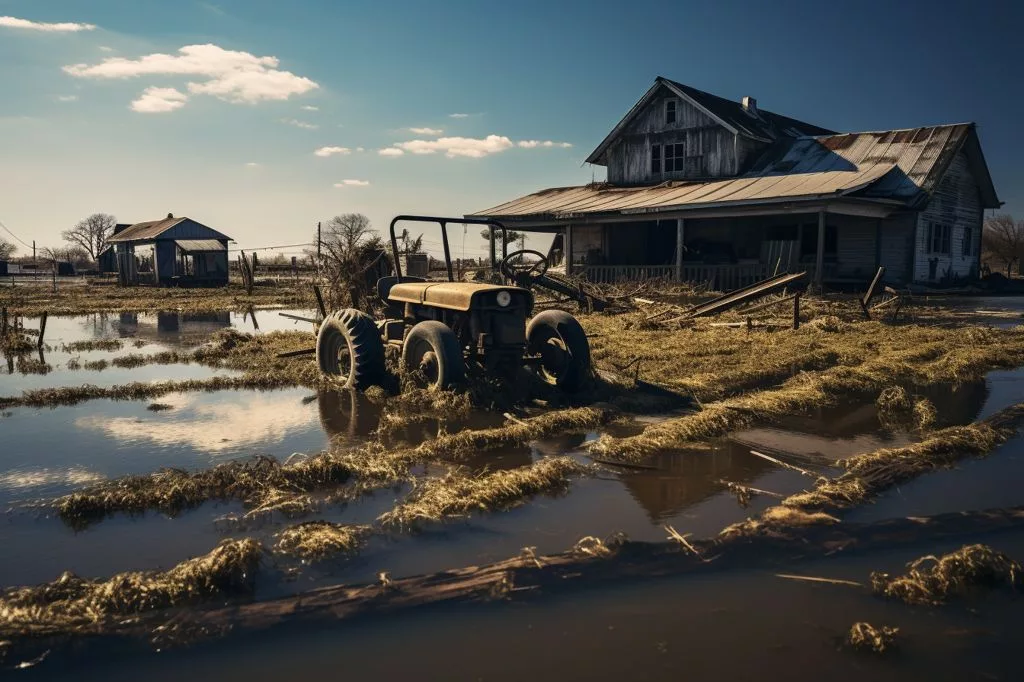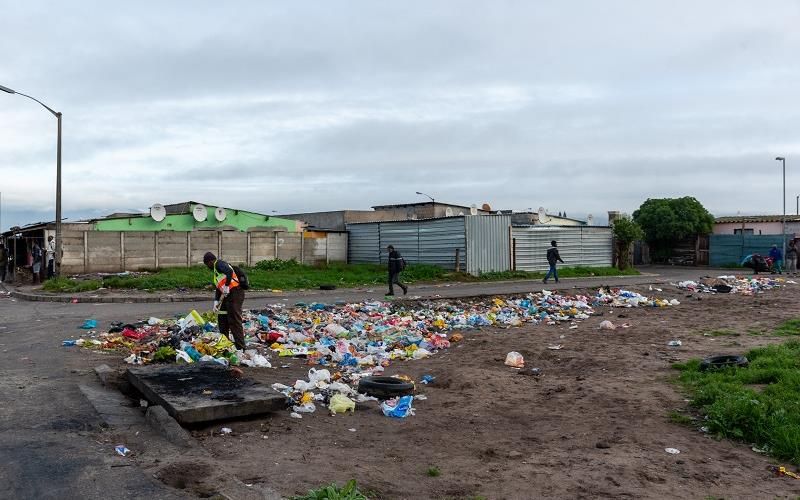Small-scale farmer Johannes Arendse’s farm was severely impacted by the recent storm in the Western Cape, with nearly 500 drowned chickens, over 50 missing pigs, and numerous dead calves and dogs. The farm, which supplied vegetables to local markets, suffered millions in damages, including the loss of infrastructure. Despite the devastation, Arendse and his workers remained hopeful, focusing on cleaning and recovery efforts. The region will face a long road to recovery, with several small-scale farmers impacted, and assistance from the National Disaster Management Centre uncertain.
The recent torrential storm in the Western Cape had a devastating impact on the farm of small-scale, emerging farmer Johannes Arendse. After the storm subsided and the waters started to recede, Arendse discovered the horrifying extent of the damage when he arrived at his farm on Friday.
Arendse’s farm, situated between Genadendal and Greyton, was a supplier of vegetables to local markets in Greyton, Epping, and Mowbray. The storm caused severe damage to the farm, with Arendse reporting that nearly 500 chickens drowned, over 50 pigs disappeared, and numerous calves and two dogs died during the storm. He claimed that the floodwaters reached over a meter deep and described it as the worst storm he has witnessed in his 25 years of farming.
Farm Struggles to Recover from the Storm
When GroundUp visited the farm on Monday, they encountered a nearly inaccessible entrance to the farm. Several parts of the farm were still under water as workers rushed to save what they could. Some workers were burying the dead livestock while others attempted to evaluate the damage on the ground.
Arendse expressed his disbelief at the intensity of the storm, admitting he had not expected the water to rise to such levels. The flood line on the plant nursery netting served as an evident reminder of the storm’s impact.
The farm was operated collectively by seven small-scale farmers from Genadendal and employed an additional 12 farm workers. Arendse estimated the damage to infrastructure, including a chipper and chaff cutter that were washed away, would amount to hundreds of thousands of rands. Regrettably, they lacked insurance coverage for such a catastrophe.
Maintaining Hope Amidst the Destruction
Despite the destruction, Arendse and his workers remained hopeful. Farm worker Jacqueline Swartz shared that they were able to recover many seedlings, although the soil was too wet for planting. For now, she and her colleagues concentrated on cleaning the mud off the indigenous river plants, part of a replanting project following the removal of alien species.
The future of these plants, however, is uncertain, as Swartz commented, “The water is going to stand for a long time. We will see if the plants will survive the mud.”
Arendse’s farm was not the only one impacted by the storm. Robert Andrews of the Trust for Community Outreach and Education Western Cape Food Sovereignty mentioned that several small-scale farmers in the area, including those in Roberton and McGregor, suffered significant losses. Moreover, McGregor remains cut off after its access bridge was washed away.
Denia Jansen, from the Women’s Legal Centre, resides in McGregor and described the heart-wrenching scene of small-scale farmers excavating the livestock buried under the sand. The town’s ATMs have run out of money, and supplies are becoming increasingly rare. Thankfully, relief organization Gift of the Givers arrived to offer aid to the town.
A Long Road to Recovery
The storm’s aftermath continues to affect the region, with parts of the N2 highway still blocked, forcing travelers to take large detours to reach Caledon, Greyton, and Genadendal. According to Wouter Kriel, spokesperson for local government MEC Anton Bredell, it will take some time for the province to recover and assess the damages.
Kriel acknowledged that obtaining funds from the National Disaster Management Centre might be a lengthy process, and it is unclear when or how much assistance they can expect. In the meantime, the province will concentrate on repairing the damaged infrastructure as promptly and effectively as possible within their budget constraints and available manpower.
As Arendse and the other small-scale farmers deal with the storm’s aftermath, the resilience of both the people and the land will be challenged. Their commitment to recovery and rebuilding will be crucial for the region’s future and serve as a testament to the human spirit’s ability to withstand and overcome difficulties.
What happened to Johannes Arendse’s farm during the Western Cape storm?
Johannes Arendse’s small-scale farm was severely impacted by the recent Western Cape storm. Nearly 500 chickens drowned, over 50 pigs disappeared, and numerous calves and two dogs died during the storm. The floodwaters reached over a meter deep and caused millions of rands in damages, including the loss of infrastructure.
How is Arendse and his workers coping with the damage?
Despite the devastation, Arendse and his workers remained hopeful, focusing on cleaning and recovery efforts. They were able to recover many seedlings, although the soil was too wet for planting. Moreover, they concentrated on cleaning the mud off the indigenous river plants, which were part of a replanting project following the removal of alien species.
How many small-scale farmers were impacted by the storm?
Several small-scale farmers in the area, including those in Roberton and McGregor, suffered significant losses due to the storm.
What happened to McGregor after the storm?
McGregor remains cut off after its access bridge was washed away. Its ATMs have run out of money, and supplies are becoming increasingly rare. Thankfully, relief organization Gift of the Givers arrived to offer aid to the town.
Is the National Disaster Management Centre going to provide assistance to the affected farmers?
Assistance from the National Disaster Management Centre is uncertain, according to Wouter Kriel, spokesperson for local government MEC Anton Bredell. Obtaining funds from the Centre might be a lengthy process, and it is unclear when or how much assistance they can expect.
What is the province doing to help with the recovery?
The province will concentrate on repairing the damaged infrastructure as promptly and effectively as possible within their budget constraints and available manpower.
Was the farm insured for such a catastrophe?
Regrettably, the farm lacked insurance coverage for such a catastrophe.
What is the future of the plants on the farm?
The future of the indigenous plants on the farm is uncertain. The water is going to stand for a long time, and it remains to be seen if the plants will survive the mud.










